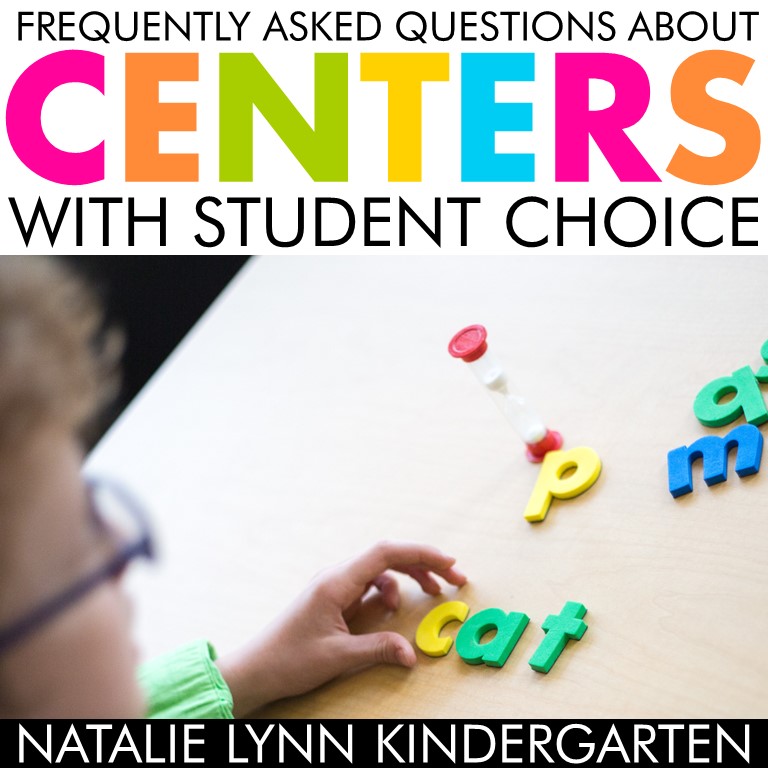
In this blog post: I am answering your frequently asked questions about running and managing free flowing centers with student choice!
If you’ve known me for any time at all, you’ve probably heard me speak about free flowing centers with student choice. This system for managing centers in the classroom has been so successful and transformative for me, I will talk anyone’s ear off all about it!
And it’s not just me. After seeing free flowing centers with student choice in action in my classroom, i’ve had multiple colleagues make the switch, too.
I have a few blog posts already about starting and managing centers with student choice, but I’ve gotten an influx of questions lately from teachers who are wanting to change up their literacy centers. This blog post will hopefully answer all of your questions and make your feel more confident to begin free flowing centers with student choice in your classroom!
Will free flowing centers work for me and my students?
I can’t tell you how many people have assumed I must teach in a ”well off” school district with tons of support and students who have been in school before.
They say, giving students choice during centers would work for those kids, but not for mine. Mine need much more support.
Let me tell you, it couldn’t be further from the truth!
I have taught in multiple school districts in multiple states. Every school i’ve taught at has been in a high poverty area with the majority of my students not having attending preschool before. In fact, I had a high percentage of 4 year old students who should have been in preschool, but couldn’t afford it.
My last year teaching, I had 30 kindergarteners. The majority came in not able to recognize their name or any letters. We had a lot of trauma and a lot of social emotional needs, and this meant a good portion of my day was spent deescalating. Our classroom was evacuated daily.
I’m not telling you this for my own benefit. In truth, you might be saying, OK – what does this have to do with centers?
Well, too often, teachers who have classes with a lot of needs feel like they’re alone. Their students aren’t ready for independent work. And centers with student choice? They feel like they need to get more control, not give it up!
Here is what I have learned over the years:
The more control over that you give students, the more control you as a teacher will actually have.
By giving students choice and control in a structured way, you’re not only building a relationship of trust and respect, but you are also teaching them essential executive functioning skills.
The key, though, is to go slow to go fast. If you don’t start off slow in teaching and introducing centers and slowly release that control, it will go downhill fast, and that is where teachers often give up. So that brings us to our next question:
How do you start free flowing centers at the beginning of the year?
If you want a more in-depth answer, I have a whole blog post about how I start centers in kindergarten.
The answer is: very, very slowly!
I get it; you want to get started with small groups. Admin is pushing you to get into your routine and get academics started. There’s a lot of pressure!
But when you begin free flowing centers with student choice, you need to keep this mantra at the front of your mind: Start slow to go fast.
The first week of school, I don’t plan for centers at all. Instead we are focusing completely on classroom procedures and routines – and taking lots of extra recesses! I want to make sure my students are independent in the classroom before I ask more of them.
The one thing I do teach that first week is how to read a book. I begin that the second day of school because I want my students to be able to practice anytime they finish something early.
I model how to ”read” a book, and then we practice with books from our display bookshelf. Look at this picture from the second day of school:
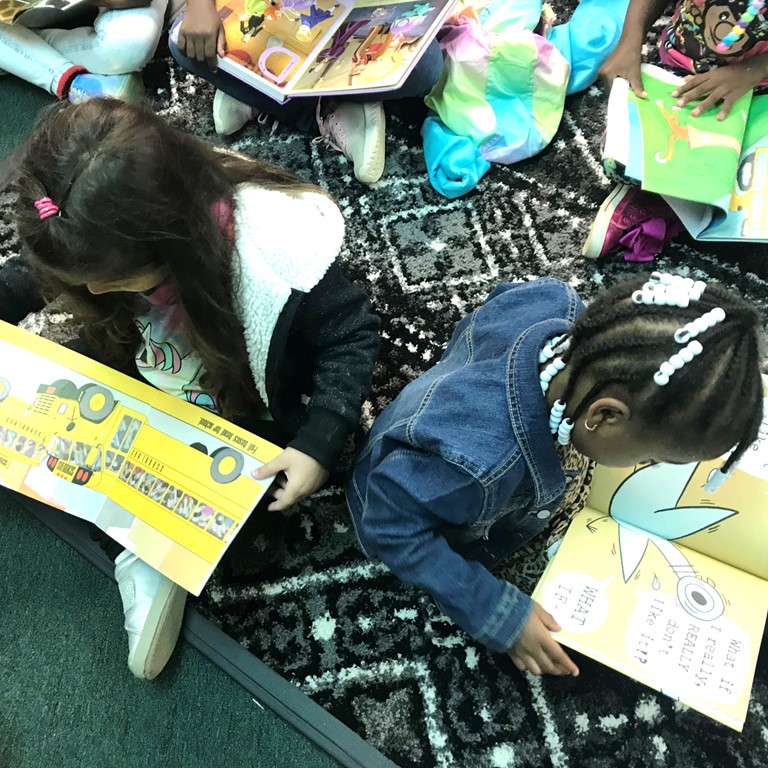
My students LOVE that they are able to look at these books, and they do so, so well with it.
On day 3 or 4, I introduce the classroom library. I bring all of my students over to our classroom library. I model how to choose a book, how to find a spot and look at the book, and how to put it back. Then I let a few students at a time come up and choose a book quickly until everyone has a book to read.
I let them practice for a few minutes, reading, putting books back, and choosing a new one. Then, I put on our clean up song and away we go!
We may introduce basket centers that Friday, or I will wait until the following Monday. When I introduce basket centers, I again model how to choose one, how to use it, and how to put it back.
When students practice, we only practice for a few minutes, or about the length of 1 song the first day. I want to them to build up stamina and come back the next day wanting more!
The next day, I go over the whole procedure again, showing them how to get a basket, use it, and put it back. I also model what not to do and let students correct me. They think it is hilarious!
Then, we practice again. This time, for just a bit longer – maybe 2-3 songs.
It may seem like we are going slowly, but remember: Go slow to go fast!
The next day, I will review it all again and then tell students they can do a basket center or read a book from the classroom library or bookshelf. They can go back and forth.
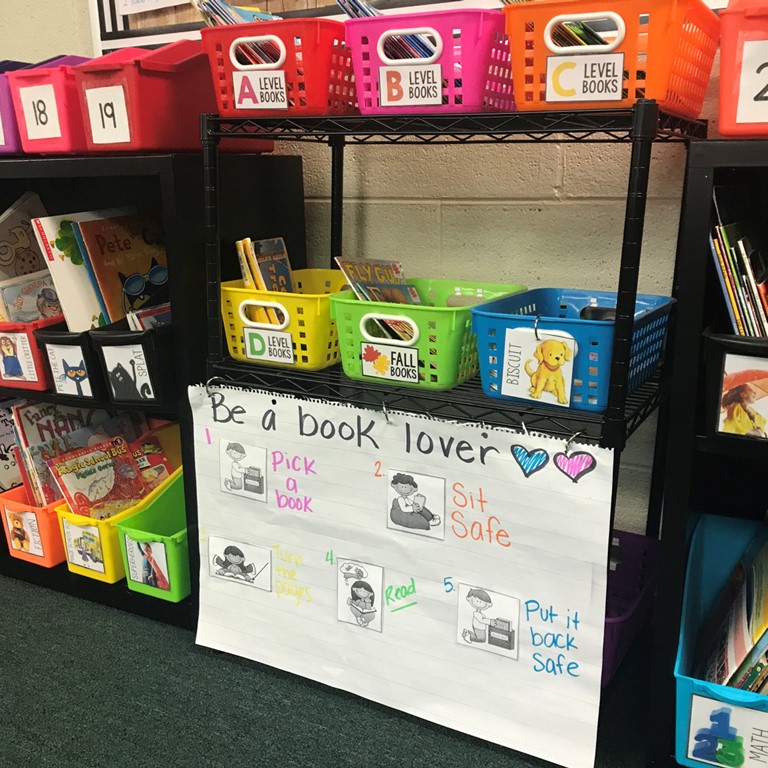
Since the classroom library is a new choice then, you will have a lot of students choose it! But don’t worry, the novelty wears up quickly.
With two choices now, we can build our stamina up for a little bit longer.
The next day, we review it all again and I introduce one of the second choice centers, usually magnets center. This is an easy center to introduce!
Again, since this is a new center, most students will want to go there. I limit it to just a few and try to cycle students through. However, I also remind students that they will get to go there another time and they can choose magnets during our free time (no, we don’t usually get free time, but at the beginning of the year I bend the rules a little).
Each day following that, I introduce another second choice center before we actually practice centers for the day.
When we introduce write the room, everyone gets a paper and we all write do it at the same time. Then, it becomes a choice during our centers practice.
When we introduce the writing center, we all do one activity together. Then, it becomes a choice during our centers practice.
We continue practicing for about a week or so.
It isn’t until about the end of the third week of school that I throw in daily rotations. Now you might be saying, rotations? Aren’t these free flowing centers?
Here is the answer to that:
Are free flowing centers completely free choice?
Whether or not your free flowing centers with student choice are completely free is up to you.
I know many people that choose to let their students go to any center any day and it works well for them!
Personally, my free flowing centers have a slight rotation. Every day, each group can choose from any of their basket (word work) centers or their second choice center.
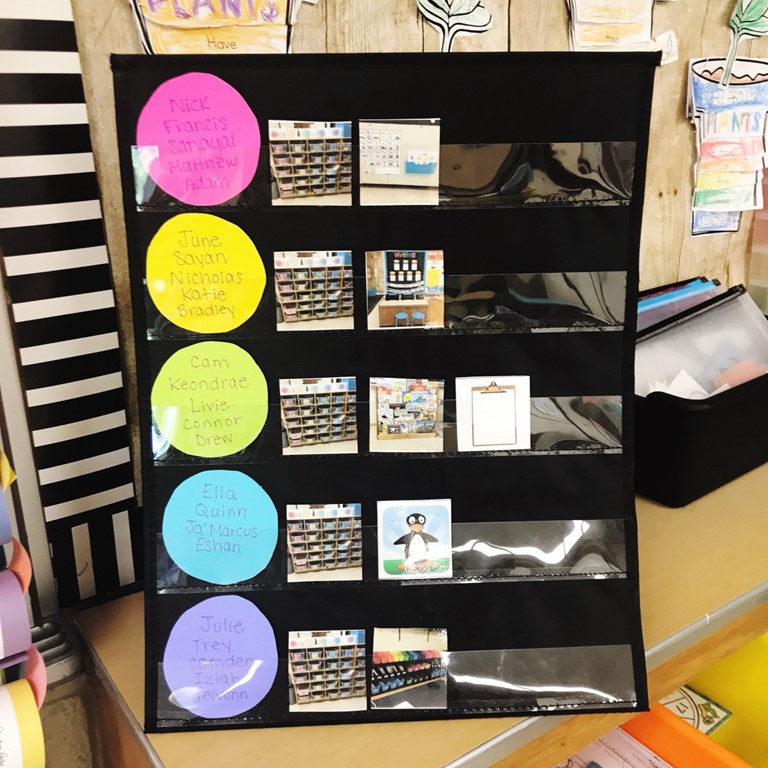
The second choice centers include the writing center, magnets center, sensory bin, write the room, library, and bookshelf. Really, you can make anything you want a second choice center and groups can have more than one second choice center each day!
The second choice centers are what rotates, so students get the choice of each one once a week.
This just makes it easier for me to manage and ensures that every students will get the chance to go to those centers if they want to.
What do you put in your centers at the beginning of the year?
I know that it is popular advice to put toys and manipulatives in your centers at the beginning of the year. That way students can learn the routine without you needing to teach activities.
I get the reasoning and if that works for you, do it!
However, I don’t do that for one simple reason: I don’t want to unteach the idea that centers are a time to play. I want my students to understand that, while fun and enjoyable, this is an important time of day during which we are working and learning.
But I also don’t want to have to teach the center activities to students those first few weeks of school. They need to be self-explanatory. So what do I put in centers?
- Activities matching uppercase to uppercase letters or matching pictures
- Building letters with manipulatives
- Matching colors
- Fine motor activities
These are all simple activities that students can do without much support, but they get them ready for harder centers.
Are you looking for a few back to school center activities to get you started? I have a FREE back to school centers pack for you!
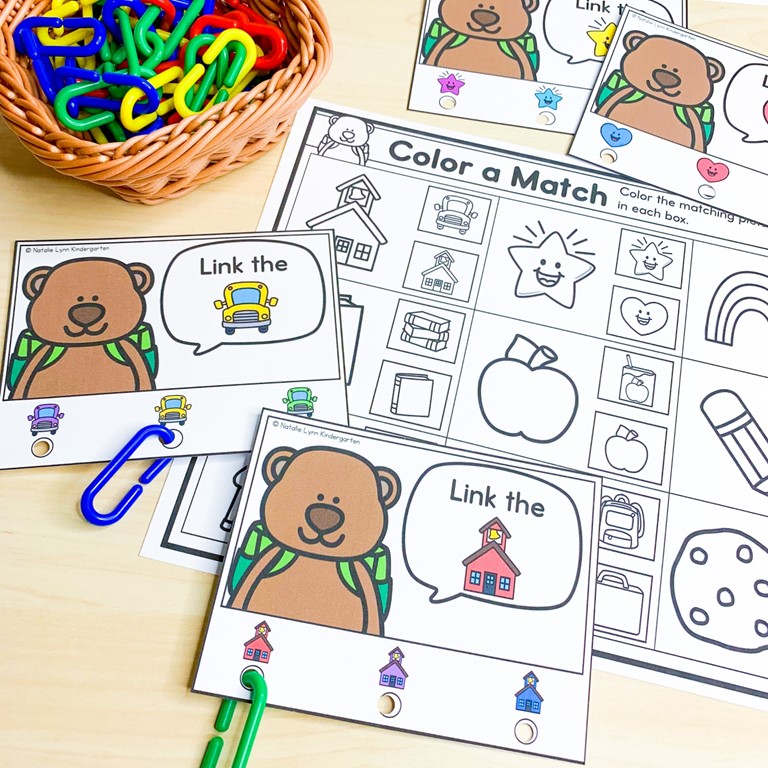

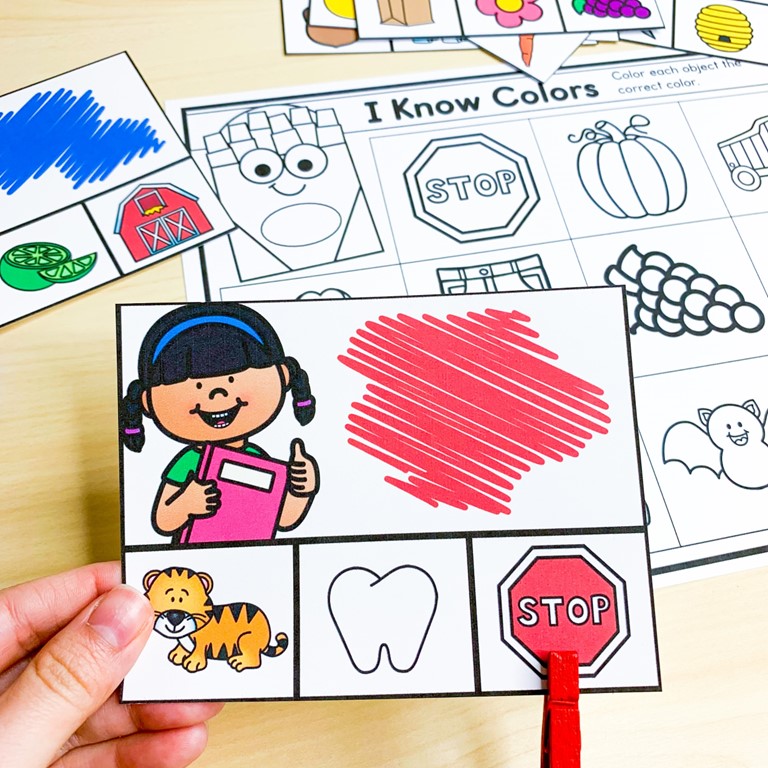
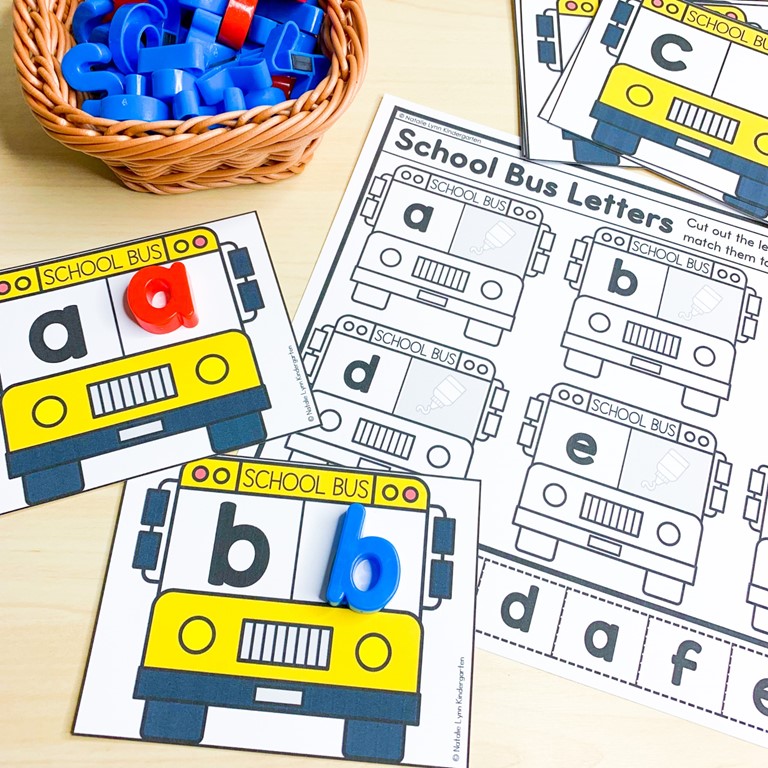
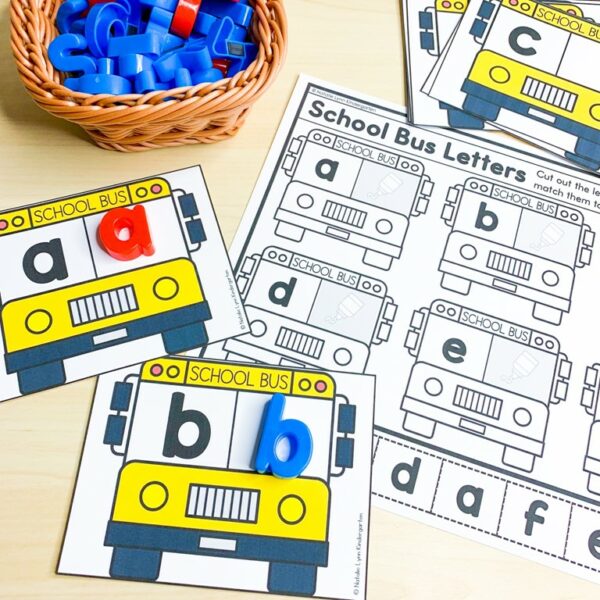
Do you love free stuff?
Free Back to School Centers for Preschool, Pre-K, and Kindergarten
These back to school centers are perfect for beginning centers in preschool, pre-K, or kindergarten!
How do you group students for centers?
In our district, before students are assigned to kindergarten classes, we do a very simple assessment. It asks them to retell a story, write their name, identify shapes, and count.
Obviously that doesn’t give us much to go on, but it’s better than nothing!
I take that information and what I see the first day(s) of school and group students for centers. My students are grouped into colors.
After I complete real testing the first few weeks of school, I can regroup my students if needed.
Our center groups are flexible! Students can be moved to another color at anytime based on the skills they need to work on.
These color groups also are not necessarily the same as my small groups for teaching.
My small groups are often made up of students from a couple different groups.
I just call the students I need to come to my table and they leave their center where it is. When the small group is done, they go right back to their center.
How do you ensure that your students are choosing work that fits their needs?
Students are able to choose work that is within their color. For example, the purple group can choose any of the purple baskets.
I make sure that the work in those baskets matches the skills they need to work on.
It is important to note that there are no new skills included in their center work!
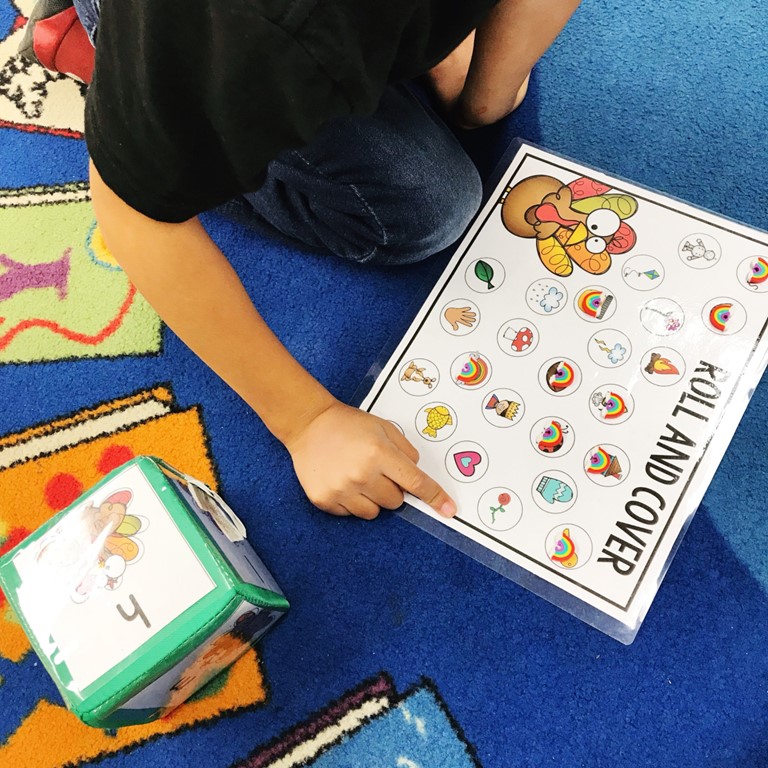
Centers are not a time for teaching, but rather a time to work on and strengthen previously learned skills.
If we’ve been working on short vowel a in small groups, then their centers may have short vowel a activities.
It does take some planning, but once you get into the swing of things, it won’t take much extra thought.
How do you hold students accountable?
If you need a way to hold students accountable, you can absolutely have recording sheets for each center that you collect. I did that my first few years of teaching, but I quickly learned that I will not check those recording sheets…
If you are in a district with access to technology, you can also give them access to a tablet. You can teach them to put their name tag next to their finished center and take a picture of it. If you set up Seesaw portfolios, those pictures can be added there.
If you collect recording sheets, I would have a basket or folder for each group, just to help you organize it a little better.
However, I don’t do any of that.
Instead, I just observe and make sure my students are on task and working. Because of the types of activities I have out, it’s pretty easy to see if students are working or playing.
For activities like the writing center, I just ask that they hold up their work to show me before they put it in their mailbox.
What if a student struggles with choice or can’t work independently?
If a student is just struggling one day – they can’t choose a center or they are having a hard to staying on track – I will usually give them two choices and have them pick one. I may also have them work near me or with a friend for the day.
However, free choice centers are not for everyone! For some students, have so many choices can be overwhelming and cause anxiety.
For students who absolutely cannot handle centers with choice, I may use a visual schedule. The schedule may be something like:
- Basket center
- Writing center
- Basket center
- Read a book
- Basket center
- Ipad
If they need even more support, I might put the exact basket center activity they need to complete on the visual schedule. You could also build in more breaks in that schedule, just depending on the support they need.
Again, for this student, I would most likely have them work close to me. If not, I would at least have them check in with me between activities, even if I am working with a small group.
What if students just wander around instead of making a choice?
Having free flowing centers with student choice doesn’t mean that they get to choose to do whatever they want! I let my students know that having that choice is a big responsibility.
Walking around is not a choice. If they are unable to pick a center, I give them two choices. If they are still unable, I choose for them and they lose the ability to choose for the day.
If wandering around is an issue, they will also lose the chance to choose where to work for the day. We know that our procedure is to choose a center and go sit and get to work right away. If they are wandering around, they are showing me that they need more support so I will choose where they work.
I try to be very consistent and firm with my rules and procedures, especially at the beginning of the year. No repeated warnings that really become empty threats.
If a student is wandering or not working correctly, they need to fix it right way or we practice or they lose that chance for the day until we can practice together. If it’s multiple students, we stop right away, come back to the carpet, and review.
It can be hard to feel like you have to constantly stop, but the more consistent you are at the beginning, the less you’ll have to stop later on.
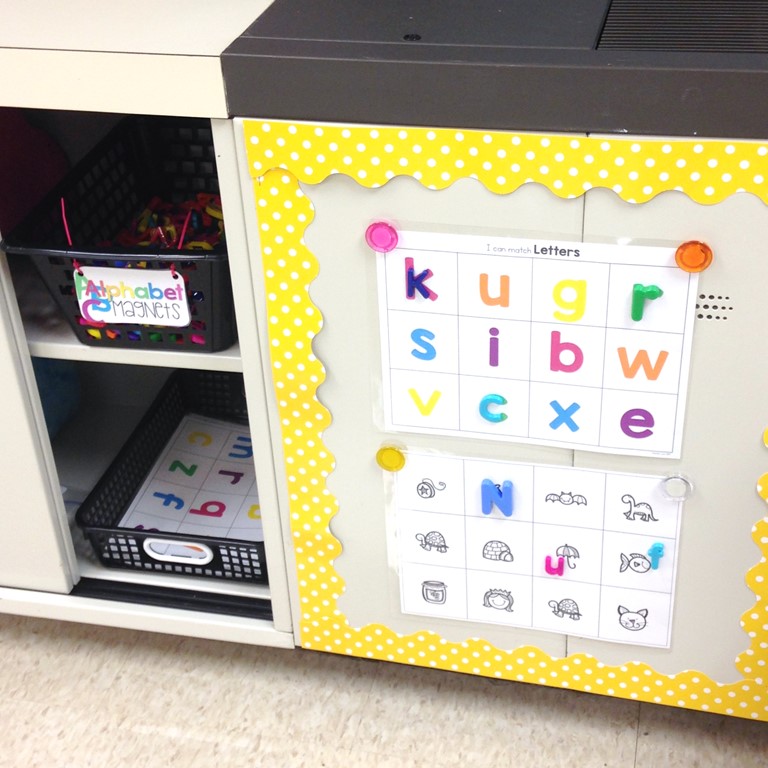
That’s why, for the first few weeks, I don’t pull small groups. I make sure my students are able to work independently first.
Then I slowly start pulling short small groups to get my students used to me being unavailable before we get into the full thing.
If a student is continuously unable to choose, they may need a visual schedule. Again, having free choice may not be the best for every student!
If a student is just not using centers correctly and nothing you are doing is working, I keep no prep printables ready and a place for them to sit. They may end up rolling on the floor the entire time, but they are out of the way of other students. That work will have to get done at another time of the day; usually before a free time.
But i’m not going to say I have the perfect answer to this, either! Every student is different, and you may have to experiment and see what works best for you.
How do you tell students it’s time to clean up?
We have a clean up song. When I put that song on, students automatically know to clean up and transition back to the carpet.
At the beginning of the year, I will tell students that it is time to clean up and come to the carpet when I start the song, but eventually I only need to play the song. Actually, they see me going to my computer and they know!
Students have until the end of that song to clean up and be back at the carpet. I try not to be verbally saying “clean up!” or “your time is almost up!”
What song should you choose for your clean up song? A song you won’t get sick of, because you’ll be hearing it every day, sometimes multiple times a day! I chose a clean pop song with a positive message for ours and it was so fun to see the class singing it!
Do you let students work together during centers time?
For me, it depends on the group and the year. Usually, yes, I will let two students work together on a basket activity.
But what if they are at different levels?
The wonderful thing about free flowing centers is that students can support each other. So if a student in the yellow group is struggling with a center, they can ask a friend in the blue group to help them.
However, I don’t usually allow them to work with friends from other color groups beyond that, just because I know that their basket centers are their just right work.
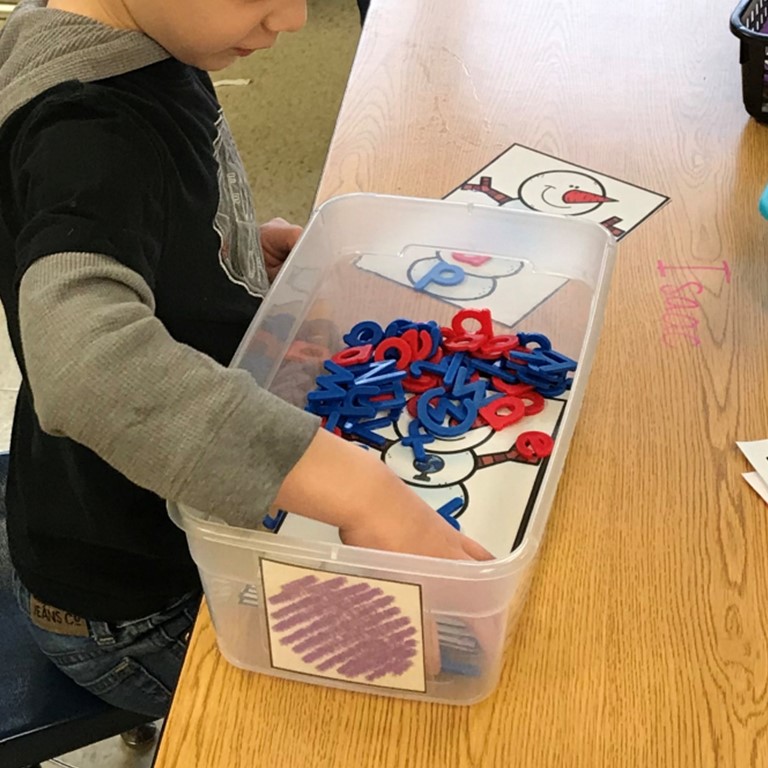
Sometimes a student will come to me and ask if they can try an activity from the next color group. I will usually say yes to this!
It gives that student a pressure-free way to try out some more challenging activities, but they know they can always go back to their just right center activities.
Every once in a while, when I feel like we need a little shake up or it is a weird day, I will let students have complete free choice. They can choose baskets from any color and they can go to any second choice center. They absolutely love this! And because it’s only on special days, it stays special to them.
How long is your literacy centers time?
Keep in mind, at the beginning of the year, our literacy centers time is short as we build up stamina! I fill in that extra time with more time for phonics as we are working hard at introducing and learning the alphabet, and we usually have an extra morning recess just for the first few weeks.
Once we get into a routine, our centers time is about an hour. Sometimes more and sometimes less. I keep my schedule pretty flexible, just so if we are in the groove we can keep it going, and if things are falling apart, we can move on!
What if centers are getting loud or students are playing around?
If I notice students are getting off task or centers are getting loud, I pause us, they leave everything right where it is, and we come back to the carpet.
We review what happened and how we should be working. Then, we go right back to try it again.
I try to keep myself positive, or at least neutral, during this time. I don’t want my students to feel like i’m yelling at them or punishing them.
Rather, I want them to know that working independently at centers is a skill we are learning, and we need to practice it.
We might have to come back to the carpet multiple times in a morning, but each time I try to point out the positive as well as what they need to fix. Then we try, try again!
Eventually, I think they get sick of having to come back to the carpet and they begin encouraging their friends to follow directions.
What if a student keeps picking the same center?
As long as they are working on a skill i’ve put out for them, i’m okay with this! They are still working and still learning.
Often, students will choose the same center over and over again because it feels safe to them. They like feeling successful.
By letting them feel that success, they are more likely to try new center activities.
You can also gently suggest that a student tries out a new center. You might say, “I want you to try out this center, and then you can get that one again.” Or, ”Work with Johnny on this activity, and then you can go back.”
If it’s a new activity, students will often want to do it over and over again because of the novelty. It can be tough to let them seemingly waste their time, but really, they are still working and still learning! Soon, the novelty will wear off and they will make a new choice.
I also know that center activities will retire after a week or two and get switched out, so it’s not forever!
But since they enjoyed that activity so much, I also know that if I can find that same activity but with a new skill to put out, they may be willing to try it!
Can centers have a maximum or minimum number of students?
This is something you will see differing opinions on. Personally, I say do what works for you and your classroom management.
I know many people who will not limit the number of students in a center because it is a great way for students to learn how to work together. It works for them!
Personally, I need to limit the number of students for my own sanity.
At the writing center and magnets center, I limit it to two students at a time because of space. Centers like library and write the room, I don’t limit the number of students because they can spread out.
Do you tell students where to work?
Usually, no. Students can take their center wherever they want. They can work on the floor, at a table, on the carpet.
I do sometimes limit it to 2-3 students per table, just depending on how chatty my class is and for space reasons.
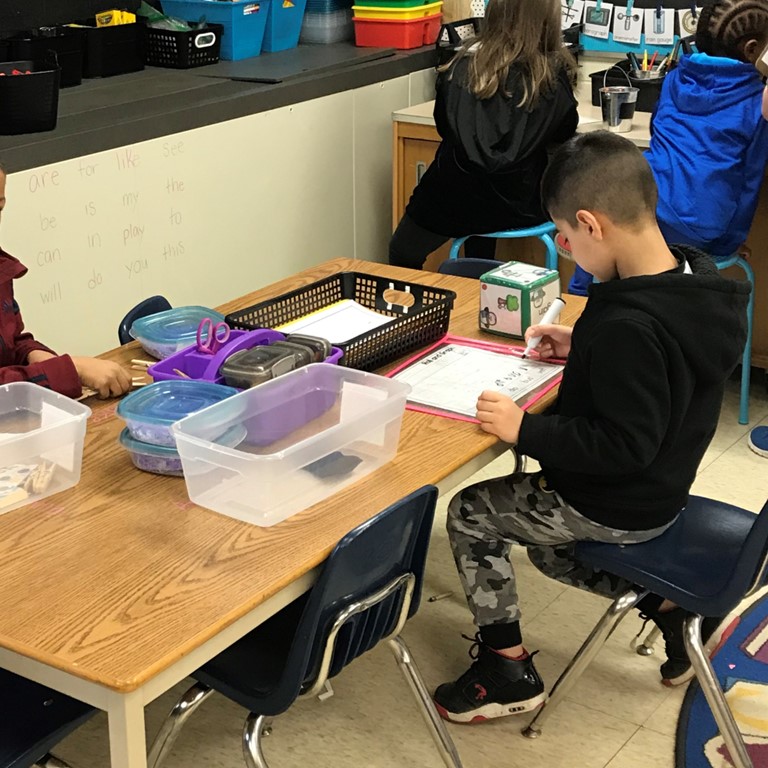
If a student is not able to be successful choosing where they work, again, I make the choice for them. Some students may need an assigned spot and that’s okay!
What if a student thinks a center is too hard?
First, I need to re-evaluate. Is the center too hard for them or do they just not want to do the work? Do they need to be in a different color group? Do I need to switch out the center activities.
Next, I might do it once with them and then ask them to complete the activity independently.
I can also allow them to work on the activity with a friend. That gives them support and encourages them to continue to stay on task.
The nice thing about having centers with student choice, however, is that if one center is too hard or not interesting to them, they have others to choose from!
Do you include technology?
I would absolutely include computers as a second choice center! In my district, we didn’t have a lot of technology so that usually wasn’t a choice for us.
Eventually we did get chromebooks for a program called ST Math.
Obviously, this was not a literacy program, but it was a second choice during our literacy center times. Why? Because my class was required to get in a certain number of minutes each week and that was the only way I could make it happen.
So how do you deal with tech trouble?
First, I make sure it’s all working at the beginning.
After that, I teach my students that if their computer stops working (which was a very common thing for us), they just make a new center choice. If I can stop between groups and fix that computer, then they can go back.
For students who have trouble logging on, they learn to ask a friend to help them. I keep student passwords at the table for students who have that center as their second choice for the day.
If you have a classroom aide or helper who can support students using technology, that is of course ideal, but it’s definitely not an option for everyone!
How do you store your centers when you are not using them?
I am probably the least organized person on this planet, so take my advice with a grain of salt! I have plastic sweater bins – one for each month and one for each skill like letters, letter sounds, CVC words, etc.
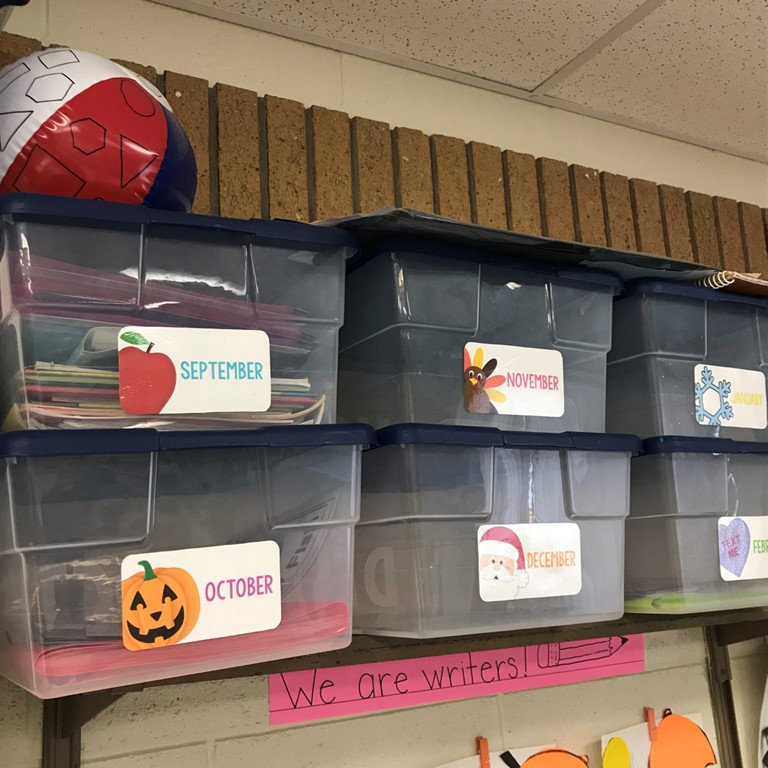
I put centers in plastic baggies or gallon baggies when not in use and just throw them in these bins!
If you want to keep all of the centers from one resource together, or centers with their recording sheets, I recommend mesh envelopes or manila envelopes inside of the bins.
How often do you switch out your center activities?
For basket centers, I switch half of the activities every week. That way, half of the activities are new and half are familiar.
Switching these activities can look like getting new centers out of my storage bins, or rotating centers from one group down to the next group.
For second choice centers like the writing center and sensory bin, I only switch these out once a month.
Magnets center and library I never switch out because there’s nothing to really switch!
Our bookshelf center is the display bookshelf in our classroom. I change those books out once or twice a month with seasonal books that match our themes.
Which of your centers do you use personally?
I like to have a mix of centers to choose from, so I will pull from many different resources of mine. My favorite resources to use for free flowing centers with student choice include:
- Kindergarten Low Prep Centers for the Year
- Pocket Dice Centers for the Year
- Kindergarten Differentiated Centers for the Year
- Science of Reading Aligned Centers for the Year
- Writing Center for the Year
- Sensory Bins for the Year
- Magnets Center for the Year
- Write the Room for the Year
Do I think that you need to purchase all of my centers in order to be successful with centers? Absolutely not! Honestly, you could use all free centers that you find online and still be successful.
However, I work hard to make sure that my centers are fun and engaging while still meeting the academic needs of all your students. My goal is to make your life just a little bit easier!
Have more questions?
I tried to answer as many frequently asked questions as I could about free flowing centers with student choice, but I know there are still many more questions out there!
If you have a questions about starting free flowing centers with student choice in your classroom, please leave them below and I will add them to this blog post.


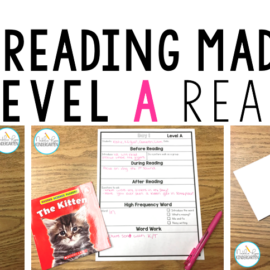
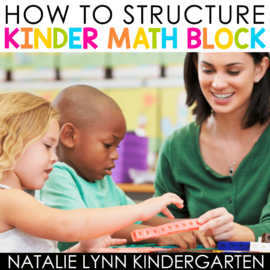
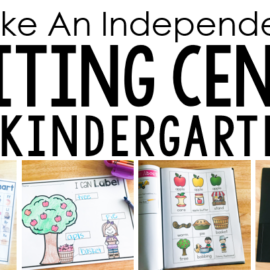

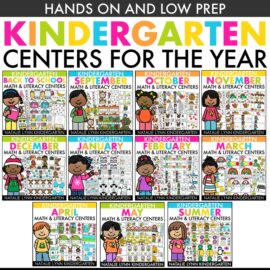
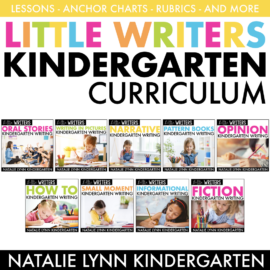
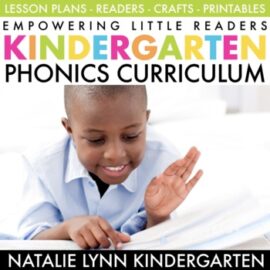
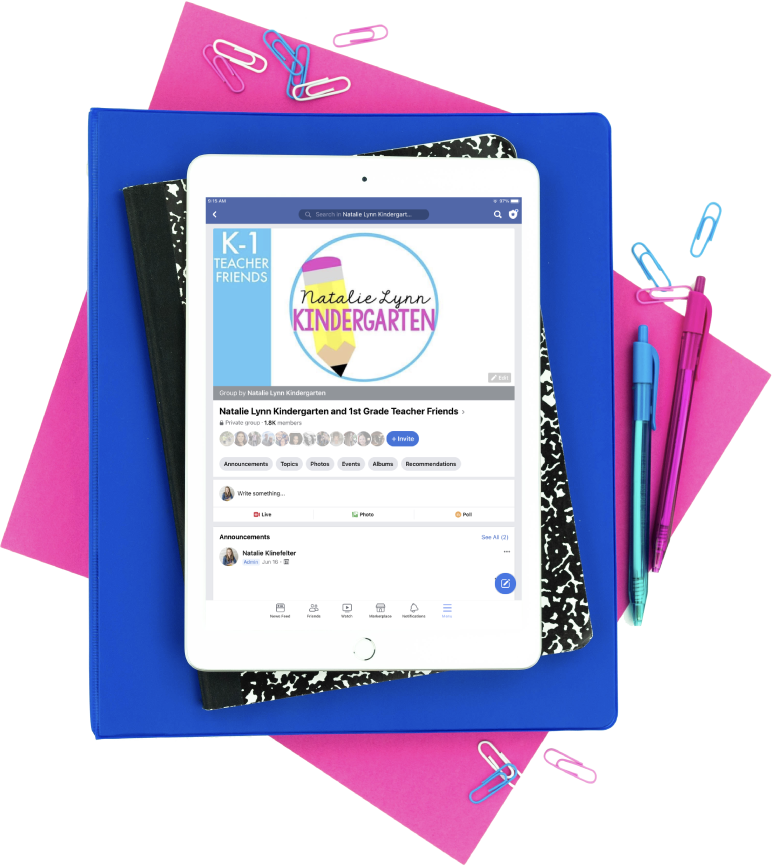

Hi there,
How many activities/bins do you have per colored group? What kinds of things do you put in there?
I have 6 baskets per group. I put literacy centers like my monthly centers or word work type activities.
Thank you for sharing! I agree that structured choice is the way to go. Great information and very helpful.
Hello! Center storage is a nightmare for me, so I’m curious about why you have monthly bins and skill bins. For example, where would you put a bat themed CVC center, in October for Halloween or in the CVC bin? I’m probably overthinking it, but like I said center storage has been a struggle and I want it to be easier this year 🙂
I would put that in October! The monthly bins have skilled centers that are themed. The skill bins have centers that either don’t have a theme or they have generic themes that can be used any time of the year.
Thank you for this blog. I will utilize this strategy this coming school year.
What is your clean up song?